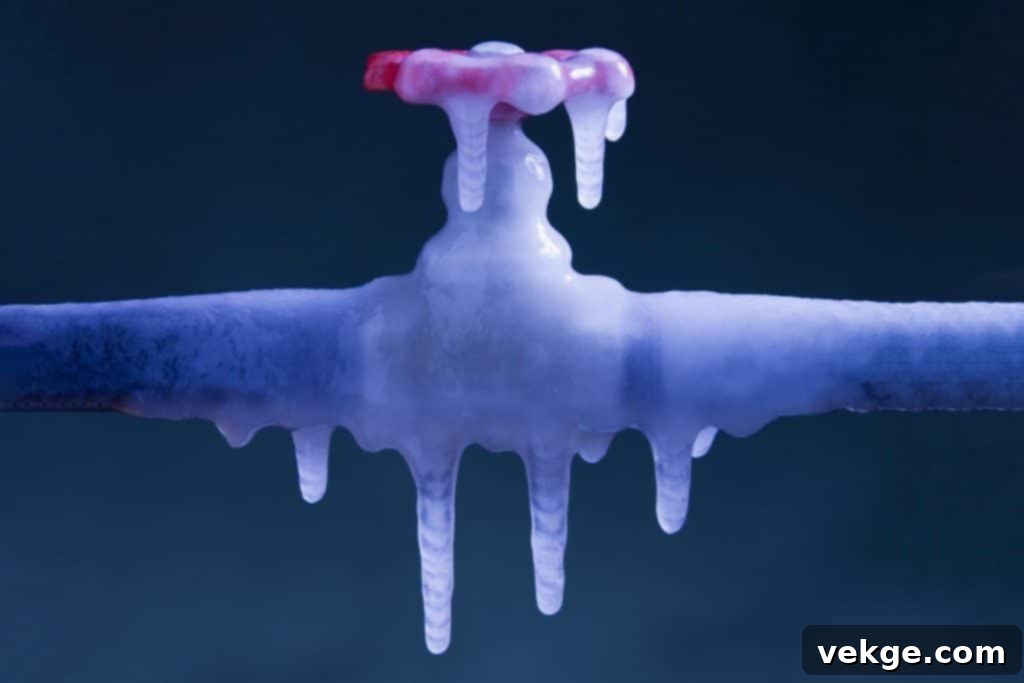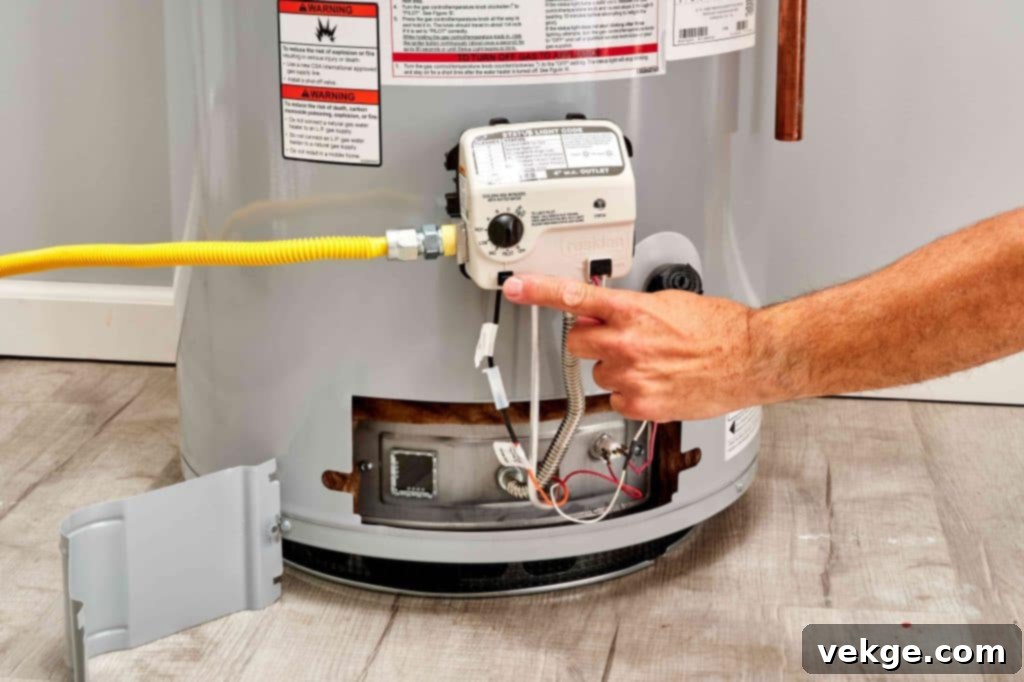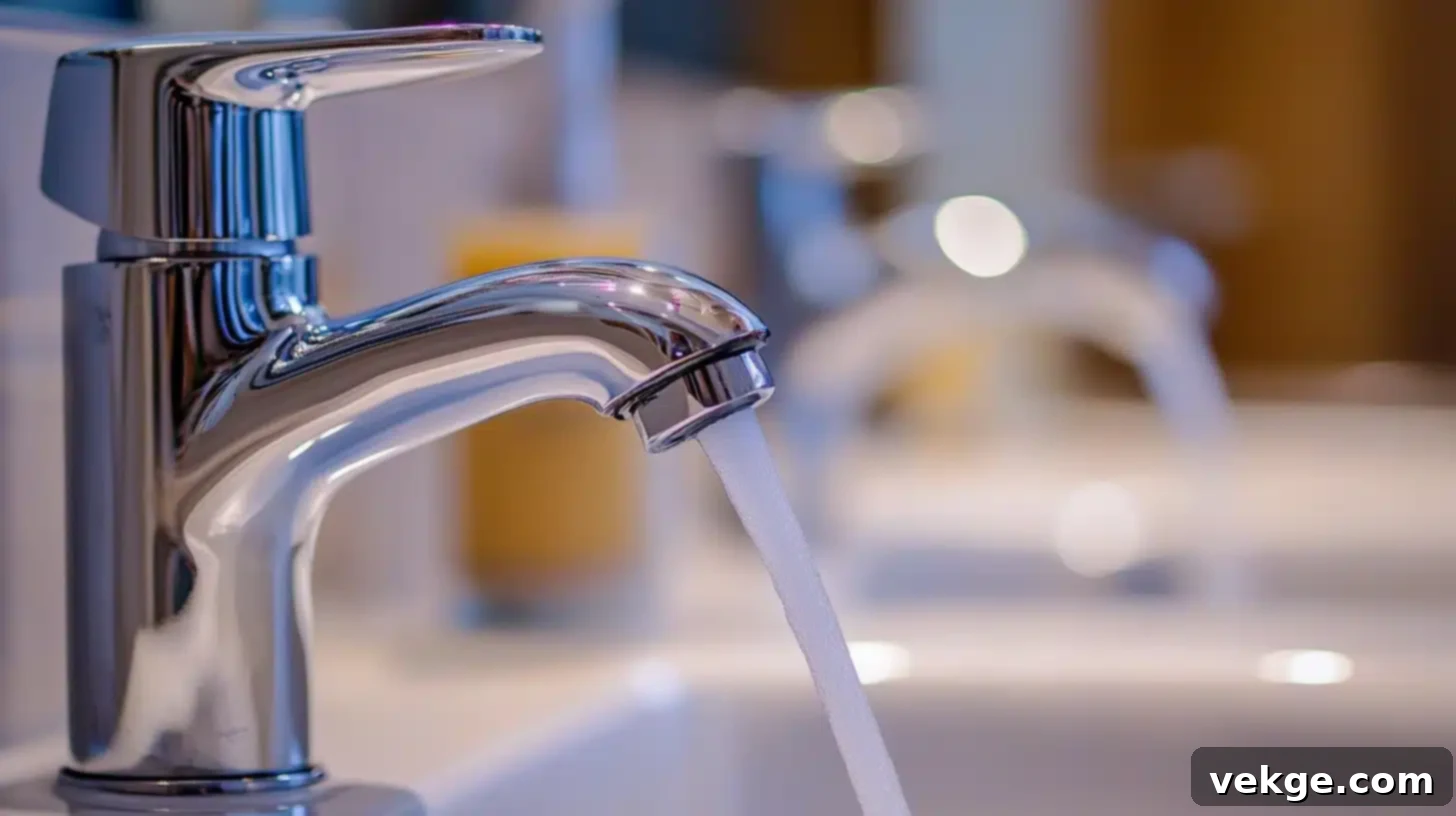Essential Plumbing Guide for Calgary Homeowners: Preventing Common Issues in a Cold Climate
Living in Calgary offers a unique blend of vibrant city life and breathtaking natural beauty. However, the region’s distinctive climate, particularly its notoriously cold winters and significant temperature fluctuations, presents a specific set of challenges for homeowners – especially when it comes to maintaining a healthy plumbing system. Without proper preparation and ongoing vigilance, your home’s pipes, fixtures, and appliances can suffer serious damage, leading to inconvenience and costly repairs.
To empower you with the knowledge needed to protect your home and ensure your plumbing runs smoothly year-round, we’ve compiled a comprehensive guide to the top five most common plumbing problems faced by Calgary homeowners. More importantly, we’ll provide actionable prevention strategies that can save you significant time, money, and stress. Remember, while many issues can be mitigated with proactive care, sometimes a professional touch is indispensable. When in doubt, don’t hesitate to reach out to a trusted plumber Calgary residents rely on, to prevent minor issues from escalating into major emergencies.
1. Frozen Pipes: Calgary’s Winter Plumbing Nemesis

Few plumbing issues strike more fear into the hearts of Calgary homeowners than frozen pipes. During our harsh winter months, water within your pipes can freeze solid. As water turns to ice, it expands with immense force, exerting tremendous pressure on the pipe walls. This pressure can lead to cracks, ruptures, or even complete bursts, often resulting in significant water damage to your home, from saturated drywall to compromised structural integrity and the potential for mold growth.
Effective Prevention Strategies for Frozen Pipes:
- Superior Pipe Insulation: Focus on insulating pipes in unheated or poorly heated areas. This includes basements, crawl spaces, garages, and exterior walls. Use foam pipe sleeves, fiberglass insulation, or even specialized heat tape to provide an extra layer of protection against the biting cold. Ensure all outdoor spigots and irrigation systems are properly drained and winterized before the first hard freeze.
- Maintain Consistent Indoor Temperatures: Avoid setting your thermostat too low, even when you’re away from home. Keeping your home’s temperature at a minimum of 13-15°C (55-60°F) helps ensure that even pipes in less-heated zones stay above freezing. For extreme cold snaps, consider opening cabinet doors under sinks on exterior walls to allow warmer air to circulate around the pipes.
- The Trickle Method: During periods of extreme cold (e.g., -25°C or colder), allowing a slow, steady trickle of cold water to flow from a faucet, especially one on an exterior wall, can be a lifesaver. Moving water is far less likely to freeze than stagnant water. While this might slightly increase your water bill, it’s a minimal cost compared to the expense of repairing burst pipes and water damage.
- Seal Air Leaks: Inspect your home for drafts and cold air leaks, particularly around pipes that run through exterior walls. Seal any cracks, gaps, or openings with caulk or weatherstripping to prevent frigid air from directly contacting your plumbing.
If you suspect your pipes are frozen (e.g., no water coming from a faucet, frost on pipes), it’s crucial to act swiftly. Attempting to thaw pipes improperly can cause them to burst. Call a professional Calgary plumber immediately. They possess the tools and expertise to safely thaw pipes and inspect for potential damage before it escalates.
2. Clogged Drains: From Nuisance to Major Headache
Clogged drains are an all-too-common household annoyance that, if left unaddressed, can quickly morph into more serious and unsanitary problems. These can range from frustratingly slow-draining water and unpleasant foul odors emanating from your sinks and showers, to complete blockages that lead to water backing up or even flooding. The culprits are varied, typically a gradual accumulation of hair, grease, soap scum, food particles, and other debris that slowly narrows your drain pipes over time.
Proactive Measures Against Clogged Drains:
- Implement Drain Screens: This simple, inexpensive solution is your first line of defense. Install drain screens or strainers in all your sinks, showers, and bathtubs. These devices effectively catch hair, food scraps, and other larger particles, preventing them from entering and accumulating in your pipes. Remember to clean them regularly!
- Never Pour Grease Down the Drain: This is perhaps the most critical rule for kitchen sinks. Grease, cooking oils, and fats might be liquid when hot, but they solidify as they cool, clinging to the inside of your pipes and acting as a sticky trap for other debris. Instead, pour cooled grease into an old container (like a tin can or jar) and dispose of it in the trash.
- Regular Flushing and Maintenance: Establish a routine of flushing your drains with hot water, followed by a mixture of baking soda and white vinegar. This natural, eco-friendly solution can help break down minor buildup and neutralize odors. Pour about half a cup of baking soda down the drain, followed by a cup of vinegar. Let it sit for 20-30 minutes, then flush with hot water. Avoid harsh chemical drain cleaners, as they can be corrosive and potentially damage your pipes over time.
- Mind What Goes Down the Toilet: Beyond just human waste and toilet paper, avoid flushing anything else, including so-called “flushable” wipes (which often aren’t), feminine hygiene products, cotton balls, or dental floss. These items do not break down in the same way as toilet paper and are frequent contributors to severe sewer line blockages.
While DIY solutions can handle minor clogs, a completely blocked drain or recurring issues often indicate a deeper problem. A professional plumber has specialized tools like drain snakes, augers, and hydro-jetting equipment to safely and effectively clear even the toughest blockages without risking damage to your home’s plumbing infrastructure.
3. Water Heater Problems: The Unsung Hero of Warmth

Your water heater is arguably one of the hardest-working appliances in your Calgary home, especially during the long, cold months when demand for hot water is at its peak. When it malfunctions, it can disrupt your daily routine significantly. Common issues include a complete lack of hot water, insufficient hot water, strange noises emanating from the tank, discolored water, or visible leaks.
Optimizing Water Heater Performance and Longevity:
- Annual Professional Inspections: Schedule annual maintenance for your water heater with a qualified plumber. During these inspections, a professional will check for wear and tear, test the pressure relief valve, inspect heating elements (for electric units) or burner assembly (for gas units), and ensure all components are operating safely and efficiently. This proactive step can identify potential issues before they lead to breakdowns.
- Regular Tank Flushing: Sediment buildup is a common enemy of traditional tank water heaters. Minerals present in your water supply settle at the bottom of the tank, forming a layer of sediment. This buildup reduces heating efficiency (making your heater work harder and consume more energy), can cause strange rumbling or popping noises, and can even corrode the tank prematurely. Flushing your water heater annually helps remove this sediment, extending its lifespan and maintaining efficiency.
- Consider Tankless Water Heater Upgrades: For homeowners looking for enhanced efficiency and endless hot water, a tankless water heater might be an excellent investment. These units heat water on demand, eliminating standby energy losses associated with traditional tanks. While the initial cost is higher, they can offer significant long-term energy savings and a consistent supply of hot water, a major benefit in a busy Calgary household.
- Monitor for Warning Signs: Pay attention to your water heater’s performance. Signs like rust-colored water, metallic smells, persistent leaks around the base of the tank, or a complete lack of hot water, especially if your unit is nearing or past its typical lifespan (8-12 years for tank models), could indicate it’s time for repair or replacement.
A malfunctioning water heater can be more than just an inconvenience; it can pose safety risks, particularly with gas units. If you notice a gas smell, do not attempt to fix it yourself and contact a professional immediately. For any water heater issues, a certified plumber can accurately diagnose the problem and recommend the most cost-effective and safest solution, whether it’s a repair, part replacement, or a new installation.
4. Leaky Faucets and Fixtures: More Than Just a Drip
A dripping faucet might seem like a minor annoyance, easily ignored, but its impact can be surprisingly significant. Even a slow drip can waste hundreds, or even thousands, of gallons of water annually, translating directly into higher utility bills and an unnecessary burden on our precious water resources. Beyond the financial and environmental costs, persistent leaks from faucets, showerheads, or other fixtures can signal deeper plumbing problems, such as worn-out washers, corroded internal components, or even compromised pipe integrity. Moreover, unnoticed leaks can lead to water stains, mold growth, and eventual damage to your cabinets, flooring, and structural elements.
Preventative Steps for Leaky Faucets and Fixtures:
- Regular Visual Inspections: Make it a habit to regularly inspect all your faucets, showerheads, and other plumbing fixtures for any signs of leakage. Look for drips, puddles around the base, water stains on surrounding surfaces, or rust. Check under sinks periodically for any dampness or musty odors. Early detection is key to preventing escalation.
- Timely Component Replacement: The most common cause of faucet leaks is worn-out internal components like washers, O-rings, and cartridges. These rubber or plastic parts degrade over time due to normal wear and tear, mineral buildup, or water pressure fluctuations. Replace these components as soon as you notice a drip. Repair kits are often readily available for common faucet brands, and it can be a straightforward DIY task for many homeowners.
- Avoid Over-Tightening: When turning off faucets, avoid over-tightening them. Forcing the handle can prematurely wear out the internal seals and washers, leading to leaks. A gentle, firm turn should be sufficient to stop the water flow.
- Address Leaks Promptly: The golden rule for any leak, no matter how small, is to address it immediately. Postponing a repair only increases the risk of more significant water waste, accelerated damage to your home, and potentially more complex and costly repairs down the line. What starts as a simple washer replacement could, if ignored, become a fixture replacement or even necessitate drywall repair.
While replacing a washer or tightening a connection can be a manageable DIY project, some leaks are more complex, involving specialized tools or a deeper understanding of plumbing systems. If you’re uncomfortable attempting the repair yourself, or if the leak persists after your efforts, calling a professional Calgary plumber is the smart choice. They can accurately diagnose the source of the leak, provide a lasting repair, and inspect for any underlying issues that might be contributing to the problem.
5. Sewer Line Blockages: The Ultimate Plumbing Nightmare
Among all plumbing woes, a sewer line blockage stands out as one of the most unpleasant and potentially damaging. This critical component of your home’s plumbing system is responsible for carrying all wastewater away from your property to the municipal sewer. When it becomes blocked, the consequences can be catastrophic: multiple slow drains throughout your home, gurgling sounds from toilets or drains, sewage odors, and, in the worst-case scenario, sewage backing up into your sinks, showers, or even overflowing toilets. This is a plumbing nightmare no homeowner ever wants to face, bringing with it not only significant cleanup costs but also serious health hazards due to exposure to raw sewage.
Crucial Prevention for Sewer Line Integrity:
- Strategic Landscaping: Be mindful of what you plant near your sewer lines. Tree roots are notoriously invasive and are one of the leading causes of sewer line damage. As trees and large shrubs grow, their roots seek out water and nutrients, easily penetrating even tiny cracks or loose joints in older pipes. Once inside, they grow and expand, creating formidable blockages. Research the location of your sewer lines and choose smaller, less invasive plant species if planting nearby is unavoidable.
- Strict Toilet Etiquette: As mentioned with clogged drains, the toilet should only be used for human waste and toilet paper. Absolutely avoid flushing “flushable” wipes (they do not disintegrate like toilet paper and form stubborn clogs), feminine hygiene products, paper towels, dental floss, cotton swabs, or any other non-biodegradable items. Educating all household members on proper toilet usage is vital.
- Avoid Pouring Grease and Harsh Chemicals: Just as grease is detrimental to individual drain lines, it can also contribute significantly to sewer line blockages, especially when combined with other debris. Similarly, while some commercial drain cleaners claim to clear clogs, repeated use of harsh chemicals can actually corrode and damage your sewer pipes over time, making them more susceptible to root intrusion or collapse.
- Regular Professional Sewer Line Inspections: For older homes, or if you’ve experienced previous sewer issues, consider scheduling regular sewer line inspections. Plumbers can use specialized sewer camera inspection technology to visually assess the condition of your pipes, identify early signs of root intrusion, cracks, corrosion, or accumulating debris. Catching these issues early allows for targeted interventions like hydro-jetting to clear blockages or trenchless repair options, which are far less disruptive and costly than waiting for a complete sewer line failure.
If you observe multiple slow-draining fixtures, hear gurgling sounds from your toilet when other drains are used, or detect sewage odors, these are strong indicators of a main sewer line issue. Do not attempt to clear it with household chemicals, as this can worsen the problem. Contact a professional Calgary plumber immediately. They have the expertise to safely diagnose and address sewer line blockages, preventing catastrophic backups and ensuring your home remains a healthy and functional environment.
The Bottom Line: Proactive Plumbing for Calgary Homeowners
Navigating the plumbing challenges unique to Calgary’s climate requires a proactive approach and a good understanding of common issues. From the deep freeze that threatens your pipes to the everyday occurrences of clogged drains and leaky fixtures, being informed and prepared is your best defense against costly and disruptive plumbing emergencies. The keys to a smooth-running plumbing system all year round are diligent maintenance, timely inspections, and addressing minor repairs before they escalate.
By implementing the prevention strategies outlined above, you can significantly reduce the likelihood of encountering major plumbing headaches. However, remember that some situations truly demand professional expertise. If you’re ever in doubt about a plumbing issue, or if you’re facing a plumbing emergency, do not hesitate to call a local Calgary plumber you trust. Their experience, specialized tools, and knowledge can provide peace of mind and ensure the longevity of your home’s essential systems.
Looking for professional, reliable plumbing services in Calgary? Don’t let plumbing problems disrupt your life. Contact our experienced team today for expert help with any plumbing issue, big or small. We’re here to keep your home’s plumbing in perfect working order!
